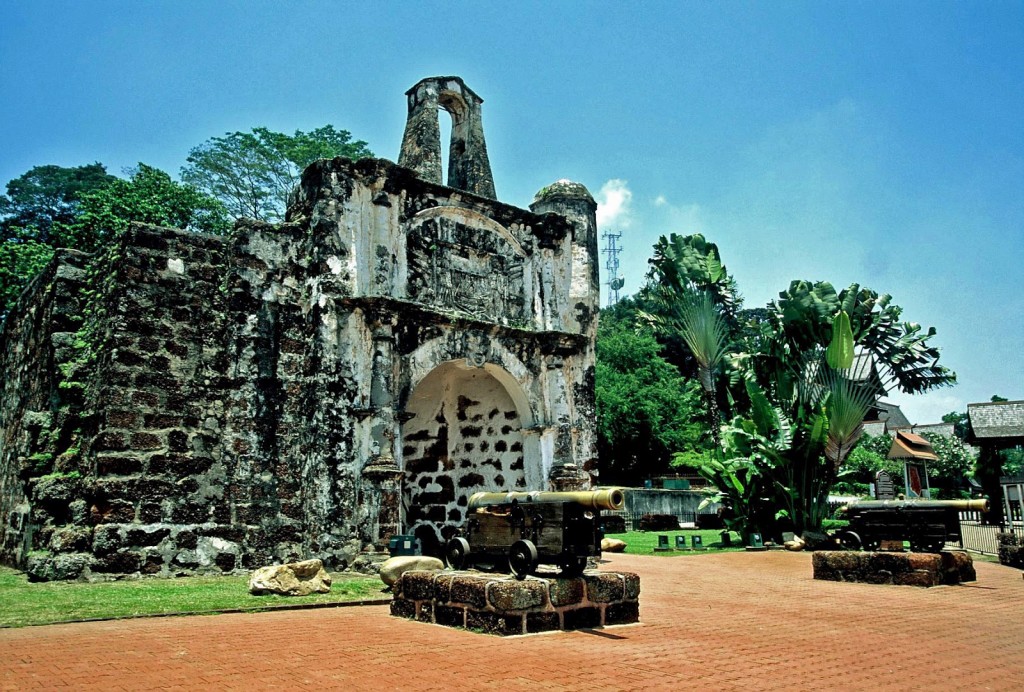The early core of the fortress system was a quadrilateral tower called Fortaleza de Malaca. Measurement was given as 10 fathoms per side with a height of 40 fathoms. It was constructed at the foot of the fortress hill, next to the sea. To its east was constructed a circular wall of mortar and stone with a well in the middle of the enclosure.
Over the years, constructions began to fully fortify the fortress hill. The pentagonal system began at the farthest point of the cape near south east of the river mouth, towards the west of the Fortaleza. At this point two ramparts were built at right angles to each other lining the shores. The one running northward toward the river mouth was 130 fathoms in length to the bastion of São Pedro while the other one ran for 75 fathoms to the east, curving inshore, ending at the gate and bastion of Santiago.
From the bastion of São Pedro the rampart turned north east 150 fathoms past the Custom House Terrace gateway ending at the northernmost point of the fortress, the bastion of São Domingos. From the gateway of São Domingos, an earth rampart ran south-easterly for 100 fathoms ending at the bastion of the Madre de Deus. From here, beginning at the gate of Santo António, past the bastion of the Virgins, the rampart ended at the gateway of Santiago.
Overall the city enclosure was 655 fathoms and 10 palms (short) of a fathom.
Gateways
Four gateways were built for the city;
- Porta de Santiago
- The gateway of the Custom House Terrace
- Porta de São Domingos
- Porta de Santo António
Of these four gateways only two were in common use and open to traffic: the Gate of Santo António linking to the suburb of Yler and the western gate at the Custom House Terrace, giving access to Tranqueira and its bazaar.
Destruction
After almost 300 years of existence, in 1806, the British, unwilling to maintain the fortress and wary of letting other European powers taking control of it, ordered its slow destruction. The fort was almost totally demolished but for the timely intervention of Sir Stamford Raffles visiting Malacca in 1810. The only remnants of the earliest Portuguese fortress in Southeast Asia is the Porta de Santiago, now known as the A Famosa.



You must be logged in to post a comment Login